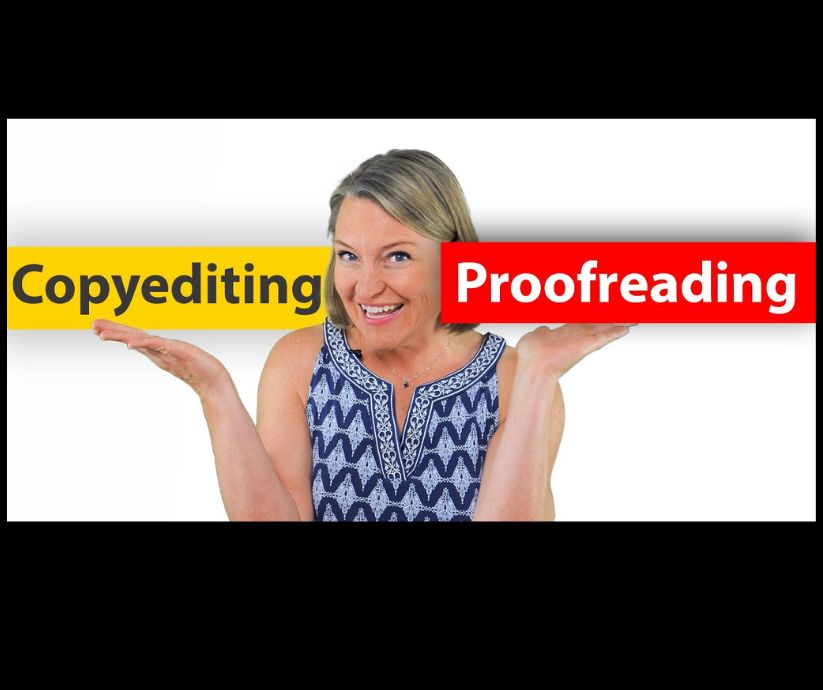Professionalism, correctness, and clarity must all be priorities in written communication. Whether you’re writing a business report, a novel, or material for a website, knowing the craft of proofreading and copyediting will make all the difference. The key elements of these steps will be discussed in this tutorial, offering insightful analysis on improving your written output.
The Editing Process
Understanding the editing process is vital before diving into the mechanics of copyediting and proofreading. Editing is a constant procedure meant to guarantee correctness, enhance clarity, and polish material. It runs through several phases, from first drafts to the finished text. Every stage is essential in improving the general quality of the book.
Structural editing—which focuses on organization and content flow—as well as line editing—which perfects language, tone, and style—are two varieties of editing. The last phases in this process are copyediting and proofreading, which guarantees polished material devoid of mistakes.
Proofreading vs. Copyediting
Effective content improvement depends on an awareness of the differences between copyediting and proofreading.
- In the editing process, proofreading comes last. It entails going over the last draft for grammar, spelling, and punctuation faults as well as spelling errors. Ensuring error-free and ready for publication is the aim of the material.
- Conversely, copyediting works to make the content generally more readable. Correcting spelling and capitalization, following a style guide, and handling copyediting vs. proofreading calls for attention. Throughout the document, copy editors seek to improve coherence, uniformity, and clarity.
Key Steps in Editing
Following a disciplined strategy in your editing can help you to produce a polished result. Here are the main things to give about:
- Final Step: Ensuring the content is error-free comes last once the primary editing is finished. This entails closely reading the material to find any last problems.
- Role of Copy Editors: Perfecting the last copy depends much on a copy editor. Their knowledge guarantees the book follows the required rules and is polished to a professional level.
- Adhering to a Style Guide: Maintaining consistency across the document depends on one using a style guide. It aids in standardizing terms, punctuation, and formatting, as well as vocabulary.
Common Editing Tasks
Good editing consists of many important tasks meant to improve the text’s quality.
- Correcting Punctuation Errors: Good punctuation determines clearance and readability; consequently, punctuation errors ought to be fixed. Mistakes in punctuation can mislead readers and change the meaning of a work.
- Addressing spelling mistakes and spelling capitalization: Correcting spelling mistakes and improper capitalization will enable your material to lose less professionalism. Manual reviews and spell-check programs help one to find these mistakes.
- Fixing Grammar and Spelling Issues: Correcting grammar and spelling problems—such as subject-verb agreement or erroneous verb tenses—may help the text flow and readability generally. Effective relaying of the intended meaning depends on proper grammar.
The Proofreading Process
The last stage of editing, proofreading, emphasizes reading the text for any missed mistakes.
- Final Draft and Test Version: Proofreaders look over the final text and any test versions to find any last problems before publication. This last stage guarantees that the text is accurate and finished in every way.
- Galley Proofs: Galley proofs are the first versions of the text under review for the last adjustments. Finding last-minute mistakes and guarantees the document is ready for publication depend on proofreading these proofs.
Benefits of Professional Editing
Making investments in copyediting and expert proofreading has many advantages.
- Professional Proofreading and Copyediting: Expert services provide the editing process with an objective viewpoint and experience. This guarantees that your material satisfies very high criteria of clarity and accuracy.
- Enhanced Readability: Good copyediting increases the text’s general readability, therefore improving its engagement value and simplicity for the target audience.
Additional Considerations
Consider the following while working on editing projects:
- Types of Editing: Knowing the several kinds of editing and their uses helps you choose the suitable technique for your material.
- Correcting Errors: Maintaining high degrees of professionalism and credibility requires errors to be fixed throughout the book.
(FAQs)
What is the difference between proofreading and copyediting?
Emphasizing grammar and spelling, proofreading occurs last in the editing process and helps to correct spelling issues and punctuation faults. Conversely, copyediting—which follows a style guide, addresses copyediting vs. proofreading, and corrects spelling and capitalization—helps the text to be generally more readable.
How do I know when my document is ready for proofreading?
Your document is ready for proofreading when you complete the main editing stages. Before beginning proofreading for the last corrections—that is, punctuation mistakes and spelling errors—make sure the material has been checked for structure, clarity, and flow.
Why is adhering to a style guide important in copyediting?
A style guide guarantees throughout your work consistency in formatting, punctuation, and terminology. Following a style guide during copyediting helps to preserve a professional and coherent look, which is vital for credibility and readability.
What are galley proofs, and why are they important?
Before publication, galley proofs—the first iterations of the text under review—are sent for the last changes. They are crucial since they enable last-minute changes and assist in guaranteeing an error-free final copy. An important phase of proofreading is going over galley proofs.
Conclusion
Producing excellent written work depends on one learning the craft of proofreading and copyediting. Understanding the editing process, separating proofreading from copyediting, and following basic guidelines can help you guarantee that your material is professionally presented, correct, and clear. To get the ideal outcomes, keep in mind to follow a style guide, handle typical editing chores, and make professional service investments. These techniques will help your written work to be outstanding and meticulously accurate.
To see more examples, visit our site, Pen to Press Publication.



